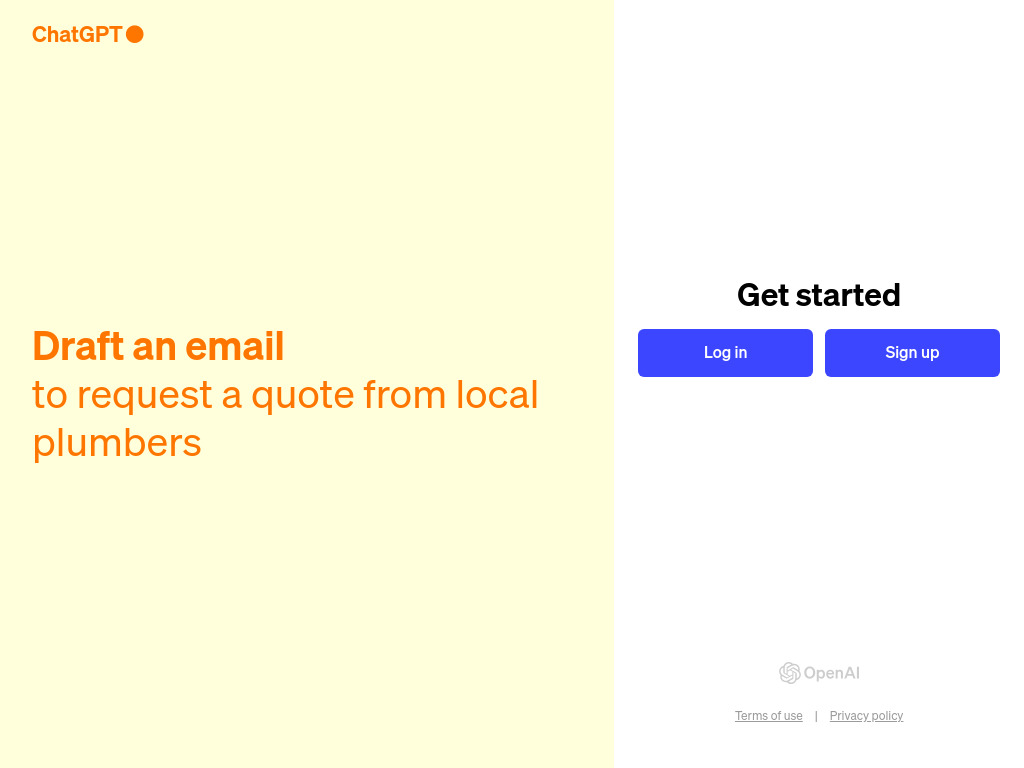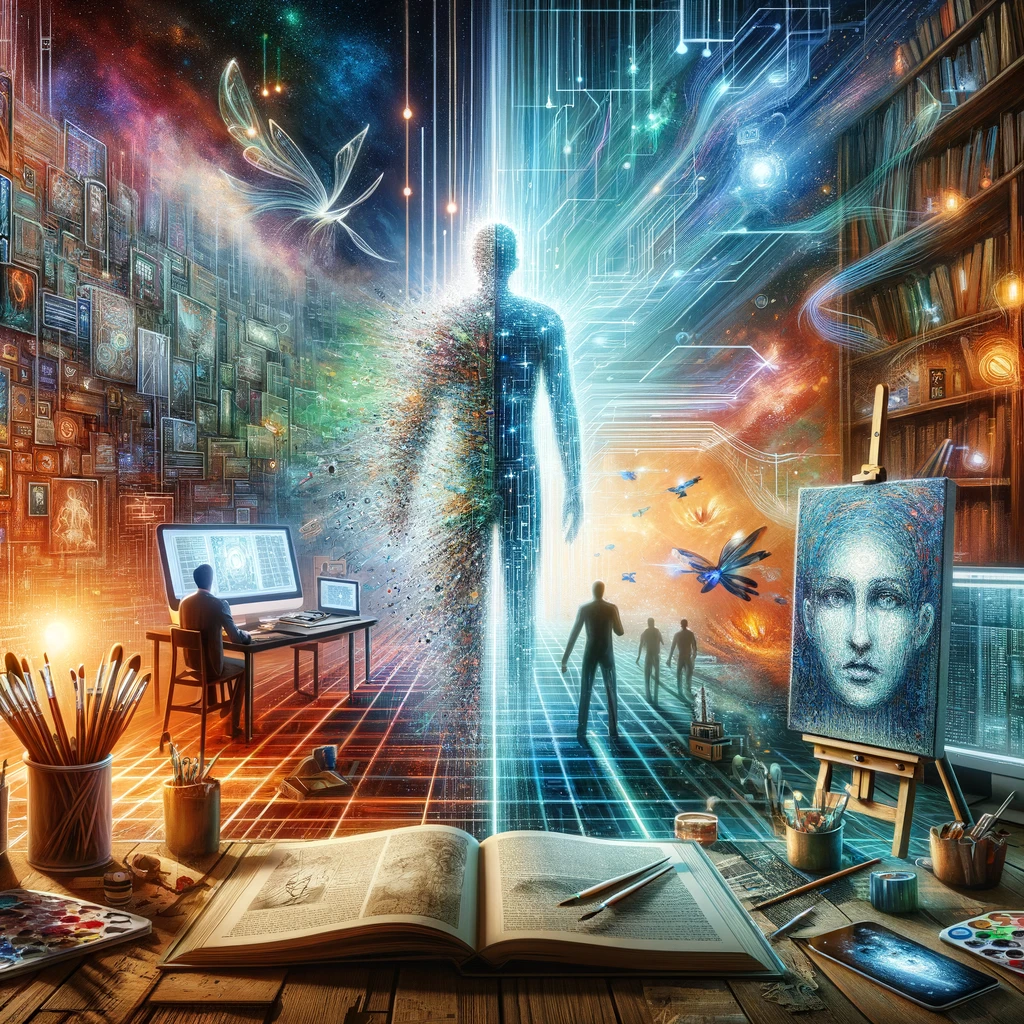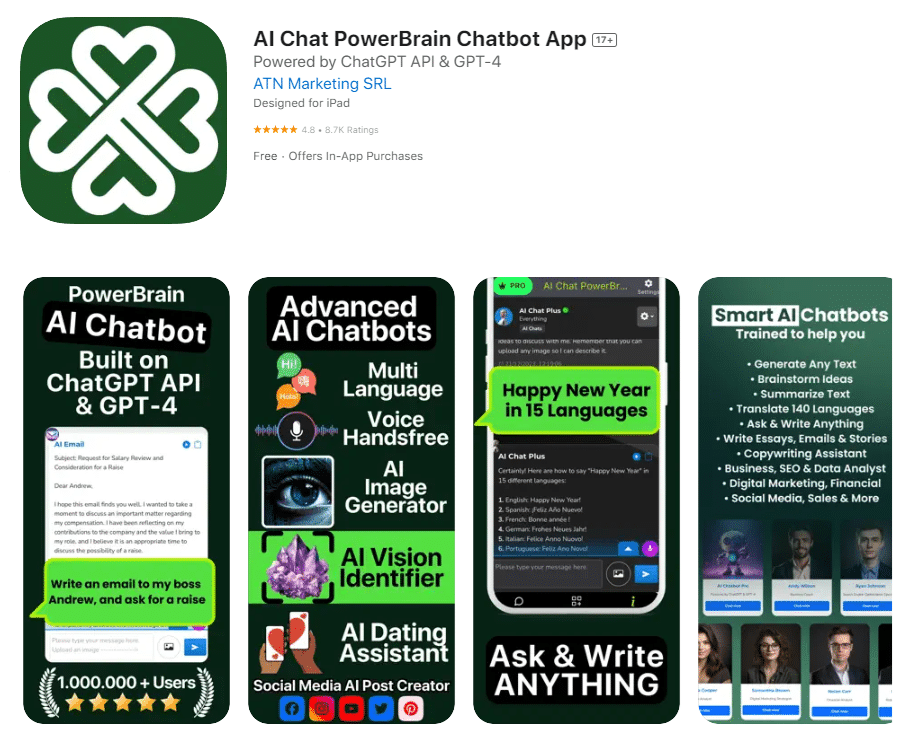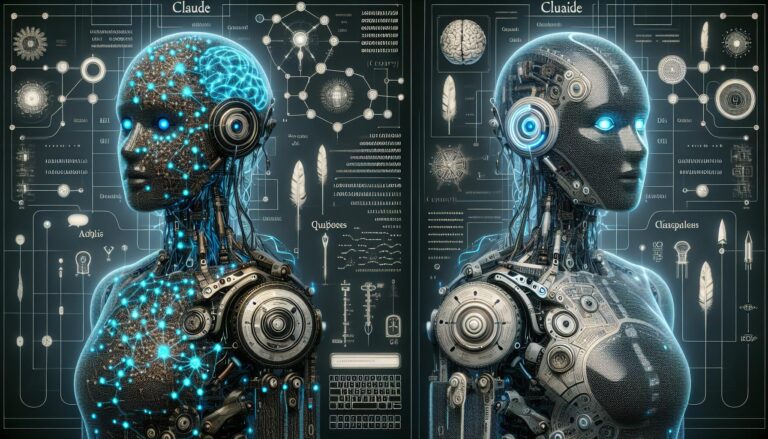Chat GPT: The Revolutionary Tool of OpenAI
Chat GPT-4 and ChatGPT represent a seismic shift in the AI arena. Their advancements in AI and natural language processing are steps towards a future where machines understand and converse like humans. My years in AI research have shown me the transformative power of such technologies. They’re not just tools but gateways to uncharted territories of human-AI collaboration.
What is GPT-4?
As the latest progeny of OpenAI, GPT-4 isn’t merely another model; it’s the pinnacle of years of research and development in language models. Having watched GPT evolve, I’ve seen GPT-4 not just as an incremental update but as a revolution that redefines the landscape of AI. Its role in AI’s evolution is akin to the discovery of fire in human history—pivotal and transformative.
Key Features and Enhancements of GPT-4
GPT -4’s capabilities are nothing short of extraordinary. It handles extensive texts, making it an unparalleled asset for generating long-form content. Its advanced reasoning mimics human thought processes more closely than ever, offering answers and insights. The accuracy and relevance of its text generation are leaps ahead, thanks to OpenAI’s meticulous tuning based on a wide range of user feedback and training data.
In my experience, one of GPT -4’s most remarkable feats is its language translation. It doesn’t just translate words; it captures the essence of languages, bridging cultures. As an advanced AI chatbot, it introduces ChatGPT to us, showcasing an ability to generate human-like responses in a dialogue format that feels natural and engaging.
Moreover, OpenAI has fine-tuned GPT-4 to reduce nonsensical answers significantly, a common challenge in earlier models. This fine-tuning process involved rigorous reinforcement learning from human trainers, ensuring that the model’s responses were not just plausible but deeply rooted in factual content.
As someone deeply immersed in the AI field, witnessing the evolution of GPT -4 has been exhilarating. Its introduction of ChatGPT marks a new era in AI assistants, offering users an advanced tool that keeps improving with each interaction. This isn’t just about technology advancing; it’s about technology evolving with us, for us.
The journey with GPT-4 and ChatGPT is just beginning. Their impact on artificial intelligence, natural language processing, and beyond is monumental. As we look to the future, we stand on the brink of a new dawn in AI, one where the possibilities are as vast as our imagination.
Accessing and Using GPT-4
To dive into GPT-4, one must start at OpenAI’s platform. It’s where the magic happens, and accessing it is pretty straightforward. First, you need an OpenAI account. Once set up, navigate to the GPT-4 section. Here, OpenAI has laid out clear instructions. They’ve made it user-friendly, ensuring developers and curious minds can explore GPT -4’s capabilities without hassle. The key is to follow the steps OpenAI provides. They guide you through setting up API access or trying out models directly on their interface. Remember, staying up to date with their documentation is crucial. OpenAI often updates features, making the experience smoother and more powerful.
What is ChatGPT?
ChatGPT, a brainchild of OpenAI, has taken the AI landscape by storm. Introduced as a conversational AI, it’s built on the foundation of language models like GPT-3 but with significant enhancements. ChatGPT’s development journey is a testament to OpenAI’s commitment to refining AI technology. It stands out as an advanced AI chatbot capable of understanding and generating human-like text responses. Its importance in AI cannot be overstated. ChatGPT has made significant strides in natural language processing, making it a cornerstone in the field. It’s not just about answering queries; it’s about understanding the nuances of human language.

How to Use ChatGPT?
Using ChatGPT is like having a conversation with a knowledgeable friend. Start by creating an account on OpenAI’s platform. Once logged in, you’ll find ChatGPT ready to interact. The process is intuitive. You’ll see an input box where you can type your queries or prompts. ChatGPT’s prowess lies in its ability to generate text responses that feel incredibly human. Whether you’re asking for a poem or seeking explanations on complex topics, ChatGPT delivers. Open AI provides the ChatGPT API for developers, allowing integration into various applications. This flexibility opens up endless possibilities for creating custom AI tools powered by ChatGPT’s language model.
The Natural Language Processing Technology of Chat GPT
Natural language processing technology is pivotal, bridging the gap between human communication and machine understanding. Open AI, a forerunner in AI research, has significantly contributed to this field with the introduction of ChatGPT, a language model that heralds new and fresh ideas in AI interactions. ChatGPT writes plausible-sounding, human-like responses that showcase the remarkable capabilities of language translation and comprehension. This AI assistant, powered by sophisticated reward models, not only understands the intricacies of human language but also translates and engages in meaningful dialogue. The introduction of ChatGPT by Open AI marks a significant milestone in making artificial intelligence more accessible and functional for a wider audience, further enriching the ecosystem of AI tools available for everyday tasks and specialized applications.
Chatting AI
AI Chat Apps
Chat GPT no restrictions
Connect ChatGPT to the internet
Chat GPT no login
xChat GPT
ChatGPT mobile app
AI Chat
ChatGPT apps
ChatGPT Examples
The ChatGPT AI Chat shines in various tasks, showcasing its versatility as a language model. For text generation, imagine asking ChatGPT to draft a story set in a futuristic world. It can weave narratives that feel both rich and compelling. In language translation, ChatGPT excels by converting complex sentences from one language to another, maintaining the essence of the original text. Another fascinating example is its ability to generate creative content like poetry or marketing copy tailored to specific styles or themes upon request. These instances demonstrate how Chat GPT, powered by Open AI, brings a new and fresh idea to artificial intelligence.
ChatGPT Use Cases
Across industries, ChatGPT’s applications are vast and impactful. In customer service, it functions as an AI tool that can answer follow-up questions, reducing wait times and improving user experience. In education, Chat GPT assists in creating interactive learning materials and providing tutoring services. The healthcare sector benefits from its ability to interpret medical jargon and offer preliminary advice, making information more accessible to patients. Chat GPT is a co-writer for content creators, generating accurate text for articles, scripts, and more. Its deployment across these varied domains underscores the model’s adaptability and the transformative potential of large language models in professional settings.
Chat GPT Technical Information
Diving into the technicalities, ChatGPT’s architecture is a marvel of modern AI development. It operates on a sophisticated neural network designed by Open AI that processes and generates language based on the training data it’s been fed. This includes a vast array of text from books, websites, and other media, amounting to billions of words. The reward model plays a crucial role here, fine-tuning the system to produce responses that align more closely with human expectations. Despite its extensive training, it’s critical to acknowledge that Chat GPT, like all AI tools, has limited knowledge and relies heavily on the text prompt it receives to generate responses. This underscores the importance of thoughtful interaction with the model to elicit the best outcomes.

Who Developed ChatGPT
OpenAI was able to introduce ChatGPT to the world in November 2022. Their team, composed of AI, machine learning, and technology experts, aimed to create a versatile AI language model that could understand and generate human-like text.
Chat GPT Price
ChatGPT offers a tiered pricing model. It includes a free version with essential features and limited access. A subscription-based model is available for users needing more from the service, such as increased usage limits and faster response times.
ChatGPT Plus
ChatGPT Plus is the subscription version of ChatGPT, providing users with additional benefits over the free version. These benefits include priority access to new features, faster performance, and higher usage limits, enhancing the AI experience. The price is 20$ per month.
ChatGPT API
The ChatGPT API allows developers to integrate ChatGPT’s capabilities into their own applications. It offers the ability to generate text, answer questions, and perform language translation, among other functionalities, enabling the creation of dynamic AI-powered tools and services.
Microsoft AI Chat: Bing AI Chat
The integration of ChatGPT with Microsoft’s Bing represents a significant moment in internet search. Bing AI Chat leverages ChatGPT’s language model to provide users with more conversational and accurate responses. This partnership enhances Bing’s capabilities, allowing it to generate accurate answers and write and answer follow-up questions more humanistically. It’s a reinforcement step towards creating a search tool that understands context better and delivers information in a more accessible format. This collaboration signifies a leap in how we interact with digital assistants, making Bing a more powerful tool for users seeking information online.
Chat GPT vs. Google
ChatGPT and Google’s AI initiatives aim to revolutionize information access but take distinct paths. ChatGPT, with its large language models, excels in generating accurate responses and engaging in meaningful conversations. It’s designed to answer follow-up questions, making interactions feel more natural. Conversely, Google Gemini has been a pioneer in using data to refine search results and AI tools like Dall E, focusing on creating and writing content. While Google emphasizes data-driven accuracy and a wide range of AI tools, ChatGPT brings a new level of conversational intelligence and user engagement.
ChatGPT Apps: The Alternatives

Several alternatives to ChatGPT offer unique features for different needs. For instance, Replika provides a personalized AI companion experience, focusing on emotional connections and conversations. Jasper AI targets content creators, offering tools for more efficient writing and content generation. Meanwhile, Hugging Face’s Transformers library is a powerful platform for developers looking to integrate AI and large language models into their applications. Each alternative brings something different to the table, whether it’s a focus on personal interaction, content creation efficiency, or developer tools for custom AI solutions. Read more about ChatGPT apps & AI Chat Apps.
PowerBrain is powered by the cutting-edge technology of Chat GPT API. You can browse our AI Chat section and download the iOS Chat AI & Android Chat AI app to test it for free.
Limitations of Chat GPT
ChatGPT, despite its groundbreaking capabilities, has many limitations. One significant challenge is its occasional generation of nonsensical answers. This stems from its limited knowledge, frozen during its last training data update. Additionally, while it can generate words in a conversation or answer questions, the lack of context or the inability to experience the world means it sometimes misses the mark in talking about recent events or providing advice based on new information. There’s always room to grow, especially in making interactions more meaningful and understanding complex user needs.
Try ChatGPT for Free
Users interested in exploring what ChatGPT offers can start with its free version. This access point allows individuals to experience firsthand how ChatGPT can generate text, answer questions, and create content based on prompts. For those curious about experimenting with this advanced AI, visiting OpenAI’s official website provides a straightforward path to engage with ChatGPT, offering a glimpse into the future of AI-driven communication and creativity without any initial investment.
Future Implications: Updates and Innovations
The future of GPT-4 and ChatGPT looks promising, with OpenAI continuously working to overcome current limitations through innovation and updates. The iterative process of improving AI models involves refining computer programs and expanding the database from which these models learn. As technology advances, we can anticipate ChatGPT to become even more adept at generating accurate responses, understanding complex queries, and engaging in meaningful conversations. The journey of AI is far from complete, and the ongoing enhancements to ChatGPT will likely redefine our interaction with technology in unimaginable ways.
The Takeaway of Chat GPT Chatbots
The journey through ChatGPT’s development, pricing models, and potential future paths reveals a landscape ripe with innovation and challenges. OpenAI’s commitment to refining ChatGPT, alongside Microsoft’s integration into Bing, signifies a robust push towards more interactive and intelligent AI chatbots. Despite facing limitations such as generating nonsensical answers or grappling with outdated knowledge, continuous updates and several iterations promise a future where ChatGPT could offer even more accurate, meaningful interactions. As we stand on the brink of these advancements, the potential for ChatGPT to transform our digital interactions remains boundless, making it a pivotal moment in the evolution of AI technology.
FAQ about Chat GPT
- What models power Chat GPT, and how do they differ?
- ChatGPT operates on GPT-3 and GPT-4 models. GPT-3 laid the groundwork for generating plausible-sounding text, while GPT-4 expanded capabilities with more data, providing a more comprehensive range of accurate responses and understanding.
- How can a user get started with writing using ChatGPT?
- Users can begin by accessing ChatGPT through OpenAI’s platform and entering a text prompt in the input box. ChatGPT will write responses based on its training data, including various examples and topics.
- Can ChatGPT integrate with tools from Google?
- Yes, developers can integrate ChatGPT with Google’s services through APIs, allowing for enhanced functionalities in apps by leveraging both Google’s vast data and ChatGPT’s advanced language models.
- What type of content can ChatGPT generate?
- ChatGPT can create a wide range of content, from articles and essays to code and poetry, showcasing its versatility in writing across different genres and formats.
- How does ChatGPT ensure the accuracy of its responses?
- Through several iterations of training with vast amounts of data and reinforcement learning, ChatGPT fine-tunes its model to generate accurate and contextually relevant answers.
















